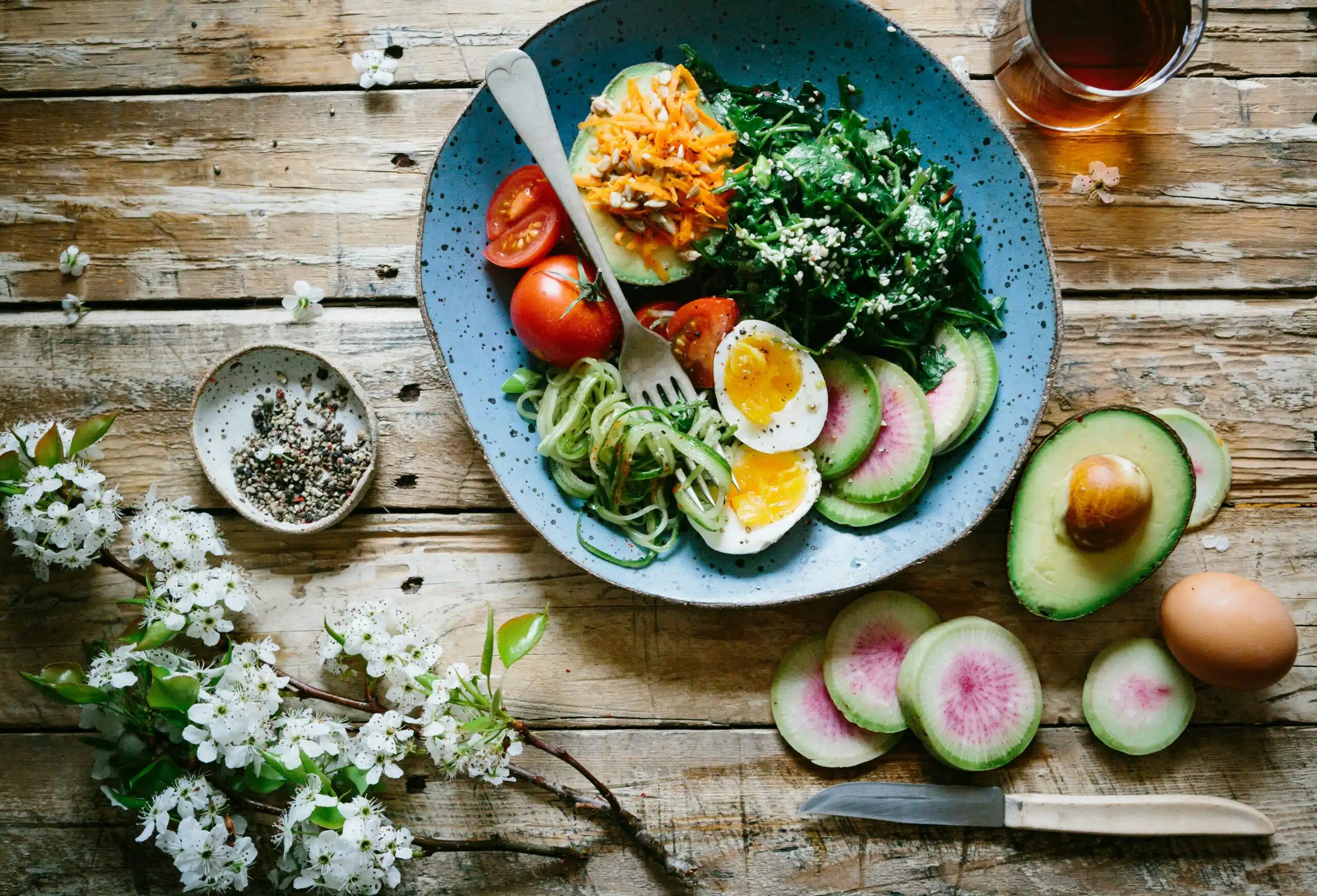If you struggle with meal prep, this week’s episode is for you! Ready to learn the framework to make balanced meals?
I promise meal planning can be easy if you have a simple framework to follow and that’s exactly what I share, in just 3 easy steps, and it’ll set you up for an entire week of healthy eating. Let’s just say… if I had ‘secrets’ for streamlining my meal prep process, this would be it! And, bonus, tip #3 is exactly how I plan ALL of my meals so they are quick, balanced, and delicious!
Creating a balanced meal that includes protein, fat, and fiber is essential for maintaining a healthy diet.
Here’s a step-by-step guide on how to make a balanced meal:
-
Choose a Protein Source:
- Lean meats: Skinless chicken, turkey breast, lean cuts of beef or pork.
- Fish: Salmon, tuna, trout, or any other fatty fish.
- Plant-based proteins: Tofu, tempeh, legumes (beans, lentils, chickpeas), or quinoa.
-
Add Healthy Fats:
- Avocado: Sliced or mashed.
- Nuts and seeds: Almonds, walnuts, chia seeds, flaxseeds, or pumpkin seeds.
- Olive oil: Drizzle on salads or use for cooking.
- Natural nut butters: Peanut butter, almond butter, or cashew butter (check for added sugars).
-
Incorporate Fiber-Rich Foods:
- Whole grains: Brown rice, quinoa, whole wheat bread or pasta, oats, or barley.
- Fruits and vegetables: Choose a variety of colorful options to maximize fiber intake.
- Legumes: Beans, lentils, chickpeas, or black-eyed peas.
-
Include a Variety of Vegetables:
- Dark leafy greens: Spinach, kale, Swiss chard, or collard greens.
- Cruciferous vegetables: Broccoli, cauliflower, Brussels sprouts, or cabbage.
- Colorful vegetables: Bell peppers, carrots, tomatoes, zucchini, or eggplant.
-
Prepare the Meal:
- Grilled/baked protein: Season with herbs and spices instead of using heavy sauces.
- Steam, roast, or sauté vegetables: Avoid overcooking to preserve nutrients.
- Use whole grains: Cook according to package instructions or substitute with a grain alternative like cauliflower rice or zucchini noodles.
-
Portion Control:
- Aim for a balanced plate: Fill half of your plate with vegetables, one-fourth with protein, and one-fourth with whole grains or starchy vegetables.
- Be mindful of overall calorie intake: Adjust portion sizes based on your specific dietary needs and goals.
-
Hydrate and Enjoy:
- Accompany your meal with water or unsweetened beverages.
- Slow down and savor the flavors to fully enjoy your balanced meal.
Need a few meal ideas? I love theses Macro-Friendly Meal Prep Recipe for busy weeknights.











